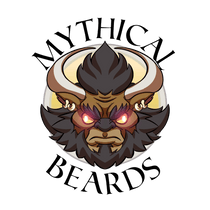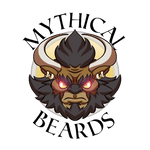Of Beards and Bikes: How Two Wheels and Whiskers Shaped American Manhood and Culture
There’s something about a man on a motorcycle that commands attention. Maybe it’s the throaty growl of the engine as it rumbles down the open highway. Maybe it’s the glint of chrome under the sun. Or maybe-just maybe-it’s the beard, dancing defiantly in the wind like a battle flag made of testosterone and rebellion.
But this isn’t just a coincidence of facial hair and horsepower. No, sir. The bearded biker is an icon-a product of history, freedom, and a fierce love for the road. This is the story of why motorcycles and beards go together like denim and dust, and how this glorious combo helped shape American identity, culture, and cool.
The Post-War Roar: When Beards Met Bikes
To understand the sacred bond between man, beard, and bike, we need to roll it back to post-World War II America.
The war had ended, and thousands of young American men returned home, stepping back into a world that had stayed the same-while they had changed. They’d seen the world in ways most people never would. They had witnessed chaos, loss, and the raw edges of life. What once seemed like a "normal" existence-commutes, routines, and neckties-now felt distant and hollow. The conventional path didn’t fit anymore. They needed something real, something that made them feel alive. So what did they do?
They bought surplus Harley-Davidsons and Indian motorcycles-machines that had seen war-and they hit the open road, looking for something that felt more real than fluorescent lights and Tupperware parties.
And the beards? They began to grow-not just because razors were a hassle on long rides, but because a beard was a visual rejection of conformity. A silent scream:
“I am not your average man. I have seen things. I have lived.”
The clean-shaven faces of middle management didn’t ride into sunsets. Bearded men did.
Route 66: The Beard Trail Across America
As these post-war rebels roared across the country, they often found themselves on the legendary Route 66-the "Mother Road." This was more than a highway; it was a symbol of American freedom.
Every diner was a cathedral. Every gas station a waypoint on the hero’s journey. And the beards? They were windswept, sun-scorched proof of the road’s lessons.
Motorcycle clubs began forming-some outlaws, some brotherhoods, all united by chrome and chin fuzz. The most famous? The Hells Angels, founded in 1948.
These weren’t polite men in polos. These were wolves on wheels. And their beards were not accessories-they were armor.
Brotherhood, Beers, and Beards
Riding solo has its appeal. But riding in a pack? That’s something else entirely.
There’s a power in rolling with a crew of bearded legends. It’s primal. Poetic. Loud as hell. The beard became a badge of brotherhood, a symbol that said:
“I ride with these men. I trust them with my life-and they trust me with theirs.”
In a way, it was the biker's flag. You didn’t need to say a word. You looked over at your brother, wind blowing through his beard like he was born in a thunderstorm, and you just knew.
The Unwritten Code: Bearded Knights of the Modern Era
But the modern biker? He’s evolved.
He still rides hard. He still flies that beard like a banner. But now, more than ever, he rides with purpose.
Today’s motorcycle culture is guided by an unwritten biker code-a moral compass sharper than a switchblade:
- Respect the road.
- Respect the patch.
- Look out for your brothers and sisters.
- Stand for those who can’t stand for themselves.
That two-fingered wave, thrown down low to passing riders? It’s not just cool. It’s a sign. A ritual. A handshake on wheels that says:
“You’re one of us. Ride safe, brother.”
Kuttes, Patches, and Purpose
Those sleeveless vests-called kuttes-are far more than leather fashion statements. They're storytelling armor, stitched with patches that mark:
- A rider’s club.
- A cause they support.
- People they’ve lost.
- Rides they’ve made.
- And sometimes… the ones who didn’t make it back.
Today, many of the most revered kuttes belong to riders who wear them for charity, protection, and justice-not just rebellion.
Charity on Chrome: The Unsung Saints of the Highway
Behind the tough exterior, many of today’s bearded bikers are soft-hearted saviors. They don’t just ride for the thrill-they ride for purpose.
Bikers Against Trafficking (BAT)
Fighting the global plague of human trafficking, these riders use their visibility, events, and street smarts to educate, advocate, and rescue. They are the voice for the voiceless, thundering through towns and raising funds to help survivors rebuild their lives.
BACA – Bikers Against Child Abuse
Perhaps one of the most powerful motorcycle movements in existence, BACA gives abused children their own personal biker bodyguards.
These bearded warriors show up in courtrooms, at homes, or wherever fear lurks-and say:
“This child belongs to us now. You won’t hurt them again.”
They bring courage, safety, and unshakable support-on two wheels and two feet.
Low XII Riders – The Masonic Biker Association
These riders uphold both Masonic values and the biker code, riding in memory of fallen brothers and supporting causes ranging from veterans to local charities. Their beards may be gray, but their missions are evergreen.
Their name-Low XII-is a tribute to the hour of passing. But their work is all about life, legacy, and service.
Local Rides, National Impact
Across America, motorcycle charity rides raise millions of dollars for:
- Wounded veterans
- Cancer patients
- Homeless shelters
- Mental health awareness
- Families of fallen first responders
If you’ve ever been passed on a Sunday morning by 500 roaring bikes, chances are they were riding for something bigger than themselves.
Their kuttes don’t just say “Club”-they say things like:
- “Until Valhalla”
- “Ride for a Cure”
- “Brothers Never Forgotten”
These aren’t slogans. They’re creeds.
Pop Culture Catches On: The Rise of the Icon
From Easy Rider to Sons of Anarchy, the bearded biker became a cultural archetype: part outlaw, part poet, part prophet with a carbureted gospel.
And marketing caught up fast. Want to sell whiskey, jeans, or a rugged new truck? Put a bearded biker in the frame and you’ve got America’s attention.
“This man doesn’t just look free-he is.”
Modern Days, Timeless Swagger
Today’s bearded biker might carry a smartphone in his saddlebag and beard oil in his saddle roll, but the message remains:
“I ride because I need freedom. I wear this beard because I earned it.”
Whether you're a weekend warrior or a cross-country crusader, that beard flapping in the wind still says I answer to no one but the road.
More Than a Machine: The Biker Community and the Brotherhood of the Road
While bikes and beards are unmistakably bold, it’s the community behind the handlebars that gives this culture its soul.
Bikers may pride themselves on independence, but when they gather-whether in twos or tens of thousands-there’s a deep, unspoken bond. It's a handshake without words. A shared code written in grease, grit, and gravel.
There’s a reason the biker community is often called a brotherhood (and sisterhood)-because even total strangers will pull over to help each other change a tire, light a cigar, or get home safely.
Milwaukee: The Holy Land of Harley
If there’s a spiritual headquarters for this culture, it’s the Harley-Davidson Museum in Milwaukee, Wisconsin.
This isn’t just a building filled with bikes-it’s a temple to the American motorcycle experience. From war bikes and road kings to art, patches, and custom choppers that tell stories in steel, this museum celebrates the ride and the rider.
Every visit is a pilgrimage. And every rider who walks through its halls walks a little taller afterward.
Bonneville Salt Flats: Speed, Soul, and Salt
For those chasing more than scenery-those chasing legacy-there’s Bonneville.
Out in the salt-crusted emptiness of Utah, engines roar across ancient lake beds in search of speed records and mechanical perfection. For bikers, Bonneville isn’t just about velocity. It’s about purity. There’s nothing to distract you-just the bike, the salt, and the silence between thunder.
It’s the spiritual edge of the open road.
Sturgis: The Grand Gathering
Every August, the town of Sturgis, South Dakota-population 7,000-transforms into the mecca of motorcycling, drawing hundreds of thousands of riders from around the world.
It’s not just a party. It’s a pilgrimage.
From beard contests and burnouts to charitable poker runs and tributes to veterans, Sturgis Bike Week is where stories are made and legends are born. If the open road had a family reunion, it would be held here.
Daytona Beach: Florida’s Iron Horse Festival
Daytona Bike Week is part beach bash, part engine symphony, part cultural touchstone.
Every spring, the Florida coast gets taken over by chrome, leather, and laughter. You’ll find custom shows, swap meets, tattoos, live music, and a sense of togetherness that runs deeper than oil and louder than pipes.
And come May, Black Bike Week brings an electric energy and a celebration of Black biker culture-showcasing style, unity, and history that’s often underrepresented in mainstream motorcycling.
These aren’t just events. They’re affirmations. That we’re still out here. Still riding. Still connected.
Wherever the road leads-Milwaukee, Bonneville, Sturgis, Daytona-one truth stays constant:
When bikers gather, they create a world of their own. A nation without borders, stitched together by beards, bikes, and the bonds that never break.
Why the Beard Still Rides
So why do so many men who ride motorcycles have beards?
Because it’s tradition. Because it’s rebellion. Because it’s practical.
Because it looks damn good in the rearview mirror of a Harley.
But most of all-because both the beard and the bike stand for something real.
In a world that tries to shave you down, the bearded biker rides on-wild, free, and American to the core.
And whether he’s chasing a sunset or riding for a cause, one thing’s for sure:
That beard doesn’t just blow in the wind-it leads the charge.










